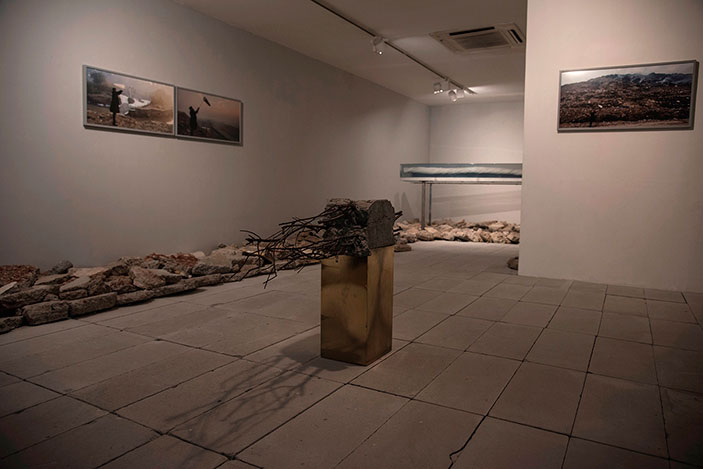Academic and Arts Writer M. Neelika Jayawardane writes in “When Life Nears‘Zero Time’”: Vibha Galhotra’s “(In)Sanity In The Age Of Reason”:
“In (IN)SANITY IN THE AGE OF REASON, conceptual artist Vibha Galhotra considers whether she, as an artist, thinker, environmental activist, and ordinary inhabitant of Delhi – can find ways to communicate and produce artwork that speaks to a world that is undeniably altered and possibly irreversibly damaged by human activity. Galhotra references the effluvial sludge clogging up the Yamuna River – undeniably material and visible toxic evidence of the slow devastation of the health of an entire city’s inhabitants – to engage her audiences, to get us to inquire about living in the age of the Anthropocene. Her work, as a whole, also poses questions about what it means for artists, and their visual practices, to encounter the Anthropocene; it forces us to consider whether aesthetic practices are able to engage with the social, economic, and political implications of climate change and environmental collapse, without resorting to creating aesthetically arresting works that inevitably draw attention to the artist and normalise devastating problems. Vibha calls on us to partner and include each other’s political presence in our artistic practices.
Galhotra uses abstractions of organic processes, which are divided into five sections meant to evoke one of the five elements: water, earth, fire, air, and space. These elements are woven together to present a narrative about the sustainable, and the destructive ways in which we have been overusing, taxing and irreversibly damaging these elements.
As her practice draws its inspiration from the manifesto 4000 AD by Stanley Brouwn (published as an artist’s book in 1964), Galhotra employs the manifesto metaphorically to signal her own environmental concerns, capturing the ways in which our daily actions and journeys leave an indelible track through the cityscape.

